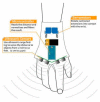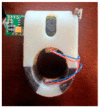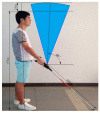Sensor-Based Assistive Devices for Visually-Impaired People: Current Status, Challenges, and Future Directions
- PMID: 28287451
- PMCID: PMC5375851
- DOI: 10.3390/s17030565
Sensor-Based Assistive Devices for Visually-Impaired People: Current Status, Challenges, and Future Directions
Abstract
The World Health Organization (WHO) reported that there are 285 million visuallyimpaired people worldwide. Among these individuals, there are 39 million who are totally blind. There have been several systems designed to support visually-impaired people and to improve the quality of their lives. Unfortunately, most of these systems are limited in their capabilities. In this paper, we present a comparative survey of the wearable and portable assistive devices for visuallyimpaired people in order to show the progress in assistive technology for this group of people. Thus, the contribution of this literature survey is to discuss in detail the most significant devices that are presented in the literature to assist this population and highlight the improvements, advantages, disadvantages, and accuracy. Our aim is to address and present most of the issues of these systems to pave the way for other researchers to design devices that ensure safety and independent mobility to visually-impaired people.
Keywords: assistive devices; navigation and orientation systems; obstacles avoidance; obstacles detection; visually-impaired people.
Conflict of interest statement
The authors declare no conflict of interest.
Figures











































References
-
- World Health Organization Visual Impairment and Blindness. [(accessed on 24 January 2016)]. Available online: http://www.Awho.int/mediacentre/factsheets/fs282/en/
-
- American Foundation for the Blind. [(accessed on 24 January 2016)]. Available online: http://www.afb.org/
-
- National Federation of the Blind. [(accessed on 24 January 2016)]. Available online: http://www.nfb.org/
-
- Velázquez R. Wearable and Autonomous Biomedical Devices and Systems for Smart Environment. Springer; Berlin/Heidelberg, Germany: 2010. Wearable assistive devices for the blind; pp. 331–349.
-
- Baldwin D. Wayfinding technology: A road map to the future. J. Vis. Impair. Blind. 2003;97:612–620.
MeSH terms
LinkOut - more resources
Full Text Sources
Other Literature Sources
Medical

